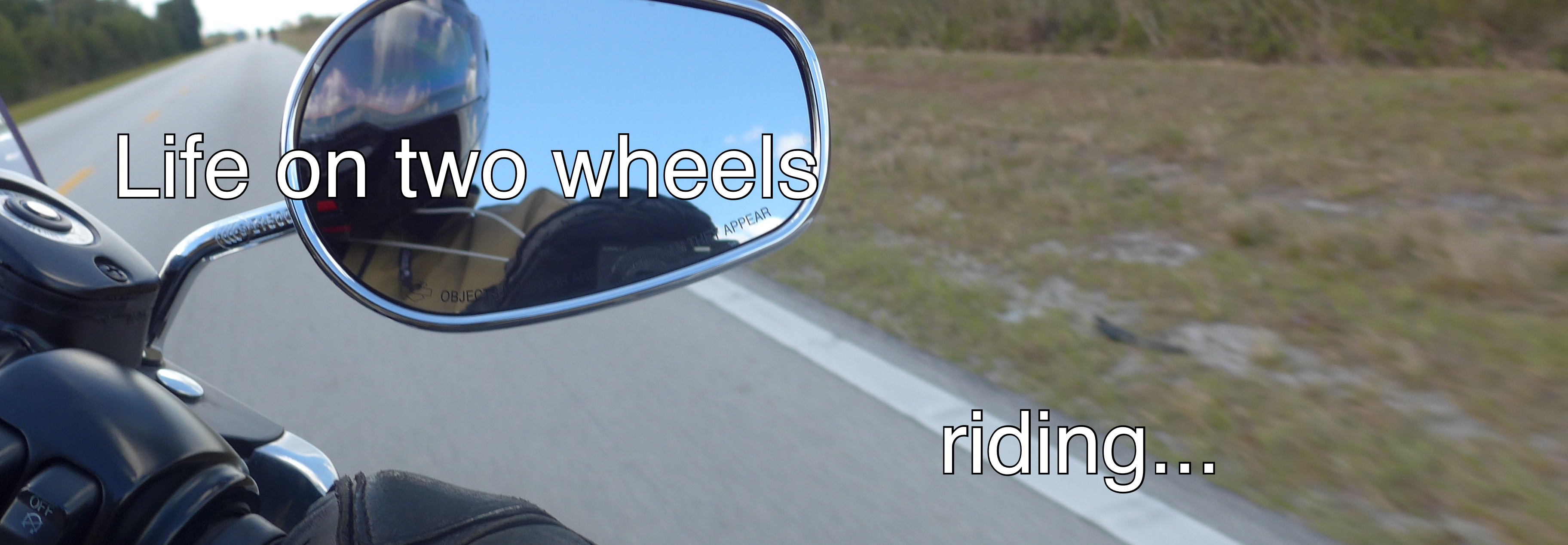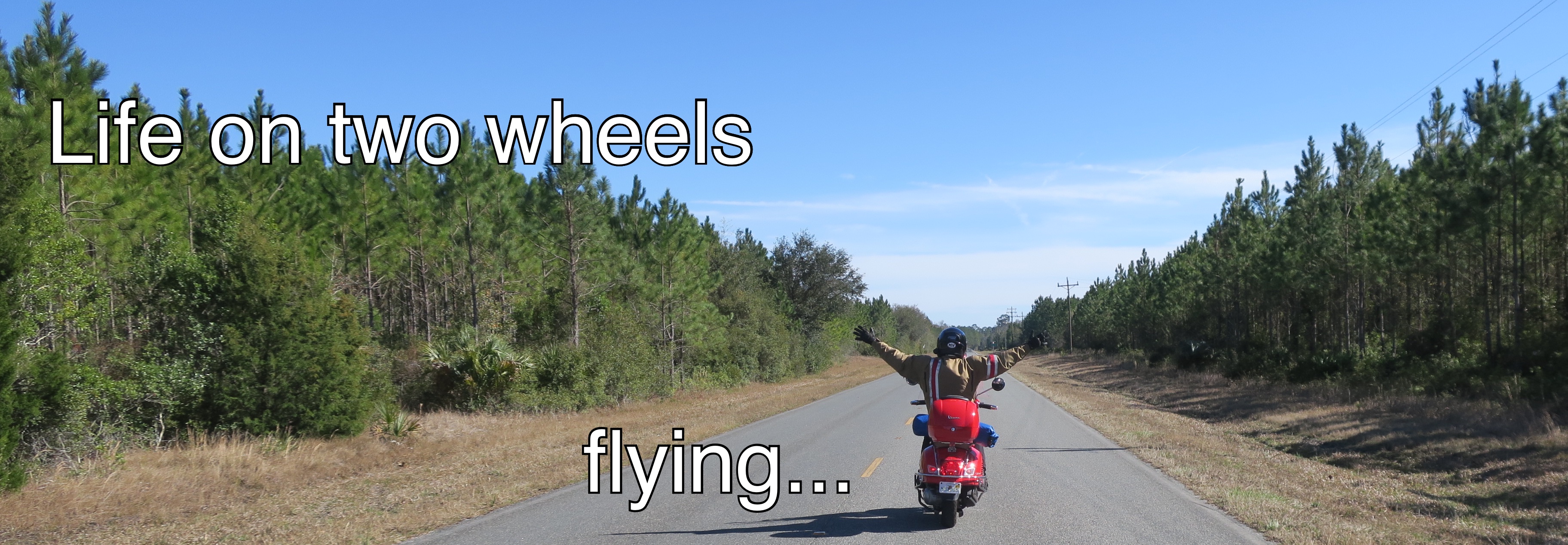Thunderbird is new to us, it's a gently used 2003 motorcycle. True to its roots, Thunderbird was fitted with a bunch of aftermarket accessories installed with thoughts of cruising down the boulevard with the sun glinting off as much chrome as possible, to the tune of very loud aftermarket Cobra exhaust pipes.
Sonja had other things in mind, like extensive touring on the east coast in Canada and the U.S. With that mission in mind, Thunderbird had to adapt. Among the changes planned was the installation of heated grips. Sonja's inaugural tour included the Canadian maritime provinces for the better part of the month of September. The prospect of some cool weather, and potentially downright cold weather, meant that Thunderbird really needed heated grips.
Here is a step by step description of the project.
Supplies:
Oxford heated grips for 1" handlebars
Methyl hydrate (rubbing alcohol)
Super glue (supplied with the Oxford grips)
Tools:
Socket wrench set
Metric hex wench set
Multi-bit screw driver
Box cutter or Dremel tool with a cutting disk
Emery paper
1. In keeping with its former mission, Thunderbird had some pretty fancy chrome Kuryakyn ISO flame grips (no doubt to match the flame paint job that Sonja and I totally disliked but that is gradually growing on us);
2. The hefty grips became a casualty early in the game. A good way to remove motorcycle grips is to insert a long slim electrician's screw driver between the grip and the handlebar, pry open a gap, and spray some lubricant in. Do that a few times and the grip will come free with a little wrestling. Another way is to use a box cutter, slit the grip and peel it off. Neither of those methods work with Kuryakyn ISO grips. The metal body of the grips is very thick, and partially encloses the end of the handlebar. Removing the decorative chrome end caps does nothing to provide access to insert a screwdriver between the grip and the handlebar;
3. After Googling to no avail, and scratching my noggin for a while, I decide to exploit the only obvious weakness. I plowed my long screwdriver into the exposed rubber sections of the grip. This destroyed the rubber and allowed me to inject some lubricant. That worked well, and I got the grips off in pretty short order. Unfortunately the rubber is now so compromised that the grips are toast. I did read some comments during my Google search that suggested that Kuruyakyn sells replacement rubber inserts, but I didn't actually see any on their website. Oh well, I wasn't planning to re-install them anyway. The grip on the right is the one from the clutch side. The rubber seems intact but chunks tore away. The other grip is the throttle side. The rubber on that side was removed piece by piece;
4. Once the grips are removed, use a box cutter to scrape any remaining rubber and glue from the handlebar and throttle tube. Use the emery paper to remove any remaining glue, then wipe the handlebar and throttle tube with a rag and the rubbing alcohol to clean the handlebar and throttle tube very thoroughly. In the photo below, the throttle control was partially dismantled and the throttle tube disengaged from the housing, revealing the way that the throttle cables are connected to the throttle tube. A similar throttle tube replacement is provided with the Oxford grips and I thought it might be necessary to swap the Honda throttle tube for the Oxford one. A closer reading of the instructions showed clearly that the plain throttle tube insert supplied by Oxford was the right one for the Honda Shadow, nicely avoiding the need to mess any further with the throttle cables;
5. The bike is now ready for the installation of the heated grips;
6. In order to provide access to install the wiring, remove the pillion saddle, and main saddle, the instrument cluster, and the gas tank. It sounds rather extreme, but in fact it's really quite easy. Each of the saddles and the gas tank is held on with a single screw located at the rear of the saddle, and at the rear of the gas tank: that's three screws in total. To remove the pillion saddle, remove the screw, then push the saddle forward then tilt it up to release it from the main saddle. The pillion saddle has a keyhole attachment at the front that fits over the main saddle bolt. When the pillion saddle is pushed forward, the open portion of the keyhole aligns with the bolt and the saddle is released;
7. Once the bolt retaining the main saddle is removed, the saddle simply lifts up and pulls away from the gas tank;
8. Before removing the gas tank, switch the petcock to the off position (horizontal), then remove the fuel line. Have a rag in your hand to absorb the small amount of gasoline that will leak out. Then remove the vapour hose on the right side at the rear of the tank. Both the gas line and the vapour hose come free with a little wiggling and tugging;
9. Now remove the four hex screws that hold the instrument cluster on the gas tank. With the screws removed, carefully release the cluster. You can let it dangle free on the left side of the bike.
10. Now remove the single screw holding the gas tank to the bike's frame at the rear of the tank. Raise the tank from the back and slide it backwards to pull it free from the rubber covered frame lugs. Set the gas tank down out of the way;
11. Now you have a much more naked bike;
12. Read the instructions for the heated grips from end to end;
13. Dry-fit the left grip. The left grip is clearly labeled at the end of its wire.
14. Now dry fit the throttle side. Use the supplied plain adapter sleeve (the one without the slots for the throttle cables) as suggested in the instructions. Pay attention to the orientation of the wires. It is important to ensure that the wires will not interfere with the controls once the grips are installed. I opted to rotate the grips so that the wire points to the rear of the bike, at a slight downward angle. That allows the wire to exit ever so slightly below the horn button on the clutch side and the starter button on the throttle side. Make sure that you leave a gentle loop of free wire on the throttle side so that twisting the throttle minimizes any binding of the grip cable;
15. With the handgrips still dry-fitted, it's time to attend to the wiring;
16. The Shadow's battery sits under the main saddle. To access it, you need to remove the rectangular control module box by simply prying it loose from the retaining clips built into the battery cover. There is no need to unplug the control module. With that out of the way, remove the screws holding the battery cover and set that aside. If the Honda Shadow is stock, simply connect the heated grips wiring harness to the battery terminals, making sure to connect the lead that has the fuse holder attached to the positive terminal. Route the fuse holder so that it will be accessible by removing the left side cover;
17. In my case, I had already installed a new circuit to power dual 12 volt outlets for a GPS and cell phone. That circuit is connected to a relay and is protected by a 15 amp fuse. I chose to tap into that circuit after the relay and the fuse. With that setup, the heated grips will positively switch off when the ignition is switched off. Strictly speaking, that is an unnecessary precaution because the controller for the Oxford grips is supposed to monitor the electrical flow and detect when the engine is not running so that it immediately goes into standby mode. I tested that theory with the kill switch and it seems to work, but I had the option of wiring the grips with the positive cutoff, and I felt sure that by going that route, there could never be a concern with inadvertently depleting the battery by leaving the grips running;
18. Once the battery side of the wiring harness for the grips is connected, connect the grips using the idiot-proof quick connectors and test to make sure that the grips work;
19. Now you know that the grips work, it's time to make the installation permanent;
20. Next up, install the controller on the handlebars. There are two options: use the supplied metal bracket and bolts to mount the controller to the clutch assembly, or use the mounting hardware to install the controller on the handlebars. I went that latter route. The placement is not quite as convenient, but I preferred the look.
22. Disconnect all the quick-connect plugs and remove the grips from the handlebars;
23. Beginning with the left clutch-side grip, clean the handlebar using the rubbing alcohol and dry it carefully with a clean rag. Now apply the supplied super glue to the handlebar all around, and promptly install the grip, making sure to rotate the grip so that the wire lead is oriented properly, which in my case was pointing rearward, and at a slight downward angle. The glue sets very fast so work quickly.
24. For the right grip it's a two step process. First apply super glue to the supplied throttle tube adapter cylinder and insert that into the right grip. Once the glue has set, apply super glue to the Honda's throttle tube and slide the grip on, once more making sure that the wire is properly oriented.
25. Beginning at the grips, route the wires for the grips and the controller so that they go behind the neck cover, and out of the left neck cover towards the rear of the bike. Route the wire from the battery wiring harness following the bike's frame along the existing Honda wiring harness. Then route the battery wire with the connector under and through the frame so that it joins the other wires protruding from behind the left neck cover. Re-connect the quick connectors, bundle up the excess wire coming from the grips and the controller with a wire tie, then wrap the bundle including the connectors with electrical tape and tuck the bundle in behind the left neck cover. If it's necessary to open the neck covers a little to get everything stashed away, remove the rectangular clip that joins the left and right neck covers.
26. Now gather the excess wire from the battery harness back at the battery, and secure the bundle with a wire tie, making sure that wire is not bunched along the frame and is tucked in with the existing Honda wiring harness. Tuck that bundle into place under the saddle making sure that it won't interfere with the placement of the saddle;
27. To be on the safe side, switch on the ignition an re-test to make sure that the grips are working;
28. And that's all there is to it;
29. Re-install the gas tank, reconnect the vapor tube and the fuel line, making sure that the spring clip is in place and that both lines are properly seated, re-install the instrument cluster and the two saddles, flip the gas line petcock to the normal vertical position, and the job is done;
30. This was the last step in preparing the Honda Shadow for its new life as a proper touring vehicle.
As soon as the job was done, I did a road test. The grips heated up nicely. They should supply all the heat one might want for spring and fall touring.




































6 comments:
David, When I told you, I don't need no stinkin' heated grips, I lied. Needless to say that I already put them to good use... twice. Thanks again for the all the work. I has proven to be well worthwhile (for me that is...).
Mmm heated grips. Unless you live in the tropics, I think they are a must.
I know, right?
I know that heated gloves, like Gerbings for instance, provide more even heat. But the nice thing about heated grips is that they are always there at the ready.
Returning from the Adirondacks in late June, there was the tiniest chill in the evening air and the Interstate speeds made the chill on my hands noticeable.
How nice just to reach down and dial in some heat.
Sonja, the thought of touring the Maritimes in mid to late September without heated grips was just not acceptable to me.
Glad they're coming in "handy" ;)
I must admit that I've used the heated grips quite a bit over the last month or so. Such as today, they were on all day. Pretty convenient.
Good write-up.
Thanks Richard.
It seems like serious chills get their head start with hands, they are the most vulnerable. Heated grips really help.
Post a Comment